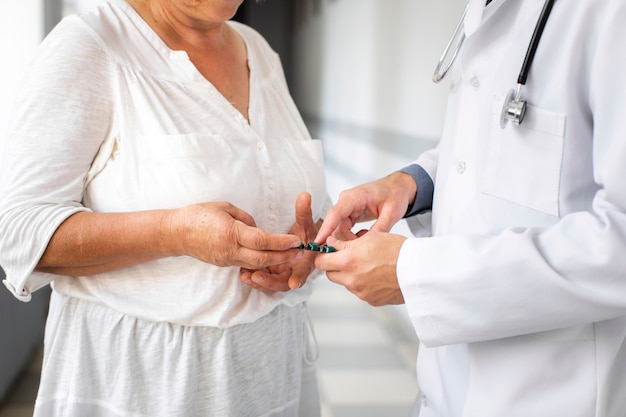
Hypoglycemia is when your blood sugar drops below 3.5 mmol/L, but anything under 2.5 mg/L is considered serious and needs checking. For diabetics, a blood sugar level of 4.0 mg/L is ideal. In infants, especially newborns, the level considered hypoglycemic is still debated, but anything above 1.7 mg/L is generally okay. The World Health Organization (WHO) defines hypoglycemia as a level below 2.5 mg/L.
Diagnosing hypoglycemia involves three factors known as Whipple’s triad: symptoms of low blood sugar, low plasma glucose levels, and symptom relief after treatment. Some causes include strict blood sugar control, malabsorption, injecting into areas of fat buildup, alcohol, insulin prescription errors, long-term diabetes, kidney dialysis, drug interactions, and insufficient anti-insulin hormones like in Addison’s disease or hypothyroidism. For children, long fasting periods or not eating enough can also be risk factors.
Recognizing hypoglycemia symptoms is crucial for healthcare professionals and patients to manage it effectively. Neurological symptoms can include seizures, coma, temporary paralysis, and stroke. Reduced awareness and cognitive issues can lead to accidents, and heart problems like arrhythmias and heart failure can occur.
For adults, treating hypoglycemia starts with a quick-acting carbohydrate, followed by a longer-acting one. You can take 15 grams of quick-acting carbs as a drink (like 150-200 ml of pure fruit juice, but avoid this if you have kidney failure), granulated sugar (two teaspoons), or sugar lumps. Dextrosol or Glucotabs can also be used. Check blood sugar after 15 minutes and repeat if necessary.
If someone becomes unconscious or uncooperative, resuscitation might be needed. You can give 75-80 ml of 20% glucose or 150-160 ml of 10% glucose intravenously, depending on the situation. A 50% glucose solution is thicker and more irritating, so it’s less commonly used. Once the person is alert, give glucose tablets as before.
If intravenous access isn’t available, give 1 mg of glucagon intramuscularly or subcutaneously. This is used for insulin-induced hypoglycemia in adults and children over 8 years or weighing more than 25 kg. Glucagon’s effectiveness depends on glycogen stores, so it might not work well in people with liver disease or cachexia, or in young children.
Once alert, offer a longer-acting carbohydrate like toast or a regular meal. In hospitals, a 10% glucose infusion might be recommended at 100 ml/hour. Severe hypoglycemia can cause permanent cognitive changes, memory loss, or even death. A prolonged hypoglycemic coma can result from cerebral edema, which occurs if hypoglycemia lasts over five hours. Treatment includes IV mannitol, dexamethasone, continuous glucose monitoring, and IV glucose to maintain serum levels between 5-10 mmol/L until consciousness returns or brain damage is confirmed.
In cases of insulin or sulfonylurea overdose, up to 80 grams of glucose as a 25-50% solution might be needed via an arterial line. Prompt treatment in children is crucial to prevent neurological damage. For adolescents and children with type 1 diabetes, continuous glucose monitoring systems, with or without insulin infusion, help prevent hypoglycemia. Oral carbohydrates and parenteral glucose are the main treatments.
For children, 10-20 grams of glucose can be taken as a liquid (like 200 ml of milk), granulated sugar (two teaspoons), or sugar lumps. Repeat if needed after 10 minutes. Additional food is necessary to prevent recurrence. Children with hypoglycemia from oral antidiabetic medication should be hospitalized, as the effects can last 12-24 hours. If sugar can’t be taken orally, glucagon can be injected. For children under 8 years or weighing less than 25 kg, 500 micrograms is recommended. Carbohydrates should be given as soon as possible to replenish liver glycogen.
Parents or caregivers of insulin-treated children should have glucagon for emergencies. It’s usually prescribed on an “as needed” basis for hospitalized children with insulin treatment, so nurses can administer it quickly during a hypoglycemic crisis. If treatment doesn’t work within 10 minutes, IV glucose should be given. Additionally, 2-5 ml/kg of 10% insulin IV (200-500 mg/kg) can be administered into a large vein with a high-gauge needle. This can be irritating, especially if it leaks out of the vein. A 50% glucose IV infusion is not recommended due to its high viscosity and hypertonicity. Patients should be closely monitored, especially if a long-acting insulin overdose is involved, as further glucose treatment might be needed.












































